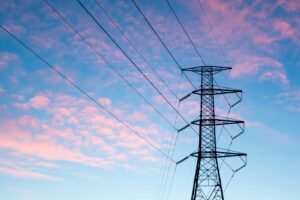In today’s interconnected world, the electric sector is more than just a utility provider; it’s a cornerstone of modern life. Its influence extends beyond mere power supply, touching virtually every aspect of our daily activities, from powering homes and businesses to fueling transportation and technology. This pivotal role, however, is not without its complexities. The sector’s global interdependencies mean that events in one corner of the world can have ripple effects across the globe, affecting energy availability, pricing, and technological advancements. As such, navigating complex interdependencies is crucial for maintaining the sector’s stability and ensuring a steady, sustainable energy supply for the future.
Obviously, this is easier said than done, which is why we wanted to start with a rundown of some of the challenges the e-sector is facing and what can be done to navigate the world’s complex interdependencies to strengthen grid security.
Prepare for and Mitigate Catastrophic Events
 The world has already seen plenty of catastrophic events in the 21st century. There have been many natural forces of nature, such as powerful hurricanes, earthquakes, tsunamis, wildfires, and other events that have been difficult to control, caused endless damage, and challenged the electric sector. Unfortunately, we know that these types of events aren’t going to suddenly stop. In fact, they’re probably going to get worse and more prevalent. It’s also possible that we’ll see black sky catastrophes on a scale that we haven’t seen before.
The world has already seen plenty of catastrophic events in the 21st century. There have been many natural forces of nature, such as powerful hurricanes, earthquakes, tsunamis, wildfires, and other events that have been difficult to control, caused endless damage, and challenged the electric sector. Unfortunately, we know that these types of events aren’t going to suddenly stop. In fact, they’re probably going to get worse and more prevalent. It’s also possible that we’ll see black sky catastrophes on a scale that we haven’t seen before.
Therefore, the electric sector needs to be able to look back at past occurrences to learn more about the challenges created by these catastrophic events. This is the only way for the e-sector to start preparing for future events and gain an idea about what can be done to mitigate the impact of these events on the grid as much as possible.
Navigating Complex Interdependencies to Balance Resiliency and Efficiency

Creating infrastructure resilience in the wake of disasters is obviously a growing concern in a variety of sectors. But building day-to-day efficiency is also a priority in the electric sector and other industries. The problem is that there is an obvious trade-off between the two. Creating more resiliency often comes at the cost of efficiency while improving efficiency often means a drop in resiliency.
The challenge is finding the right balance, which is a topic that is yet to be fully explored within the e-sector. Is there a way to become more resilient with labor redundancy and new types of hardware without sacrificing efficiency? It’s a difficult question to answer and an obvious challenge for the electric sector.
Creating a Greener Grid

Needless to say, this has long been one of the biggest challenges for the electric sector. There’s no question that the world needs to move toward relying on different types of renewable energy resources like solar and wind while eliminating our dependency on coal, oil, and other energy forms that cause carbon emissions to spike. However creating a greener grid and making a large-scale transition to green technologies remains a huge challenge.
While it has been done in some corners of the world on a small scale, there are both technical and political barriers to accomplishing this on a global scale. Therefore, while creating a greener grid is one of the biggest challenges the electric sector is facing, there are several smaller challenges that need to be addressed in order to make global green energy technology a reality.
Pandemic Resilience

The electric sector was not immune to some of the changes the world experienced during the COVID-19 pandemic. In many ways, it introduced a new type of unexpected world event that challenged the resilience of the e-sector. The bad news is that there is no way to guarantee that there won’t be another global pandemic in the future.
Of course, the silver lining is that the world now has experience going through a pandemic. The electric sector should be able to take lessons from the COVID-19 pandemic and apply them to future pandemics. But that doesn’t mean it’ll be easy to improve resilience in preparation for another pandemic. Other catastrophes could be more pressing and future pandemics could unfold differently than the COVID-19 pandemic did in 2020.
Cybersecurity Implications for a Black Sky Event

Addressing cybersecurity is already a pressing challenge for the electric sector. The last few years have seen a surge in nefarious actors trying to infiltrate power companies and wreak havoc on the electric grid. While this is obviously a priority for the e-sector, it becomes an even bigger challenge during a black sky event. This is when the grid is most vulnerable to an attack and when cybersecurity may not be among the highest of priorities.
Obviously, it’s important for the e-sector to recognize how a black sky event would make the industry more vulnerable to cybersecurity threats and what can be done both before and during these events to make sure cyber threats are properly controlled.
Required Policy Changes

As mentioned, there are political elements that stand in the way of the electric sector meeting some of the challenges it faces. Unfortunately, the e-sector isn’t able to make the type of policy changes that are required to solve its questions. In other words, things are often taken out of the hands of the electric sector, making even its most powerful actors unable to do anything.
Nevertheless, it’s important for the e-sector to know at least what types of policy changes are required to become more resilient, better prepared for catastrophes, or more capable of creating a greener grid. By understanding the policy changes that need to be made, the sector can be in a better position to flex whatever political will it has to influence world governments and push for the most important policy changes that will help push the needle.
Navigating Complex Interdependencies: How to Expand Your Knowledge
Are you concerned or hoping to learn more about any of the challenges mentioned? If so, you are welcome to register for the Resilient Renewable Electric (R2eP) Conference in Philadelphia on February 5 and 6. Professionals who work in infrastructure, the electric sector, first response, resilience management, or international aid can benefit. It’s a great conference for global collaboration, learning resilience practices, addressing cross-sector issues, and training for catastrophic events. The conference is the perfect platform for listening and learning from experts about navigating complex interdependencies, creating resilience, and preparing for catastrophic events. What are you waiting for? It’s not too late to join us and build a resilient e-sector for future generations.
Create Impact with us:
Join our membership and
contribution programs
Participate in our
upcoming events:
Schedule a call with
our experts:
Advancing Earthquake Resilience: Strategic Urban Planning and Global Partnerships
In an era where urban landscapes continue to sprawl and the frequency of natural disasters seems to be on the rise, the importance of building resilient cities has never been more pronounced. Earthquakes, in particular, pose a significant risk to densely populated areas, with the power to cause extensive damage and incur millions in damage […]
Cyber Resilience in the Energy Sector: Safeguarding the Grid from Digital Disruptions
In today’s interconnected world, the energy sector stands as a vital backbone of national and global infrastructures, facilitating everything from lighting our homes to powering industries. However, this sector is increasingly finding itself in the crosshairs of cybercriminals, making cyber resilience not just a matter of technological integrity but of national security. The concept of […]
The Role of Local Governments in Strengthening Infrastructure Resilience
The significance of local governments in strengthening infrastructure resilience cannot be understated. Often perceived as entities primarily focused on addressing routine community concerns and improvements, their responsibilities extend far beyond these day-to-day operations. In the realm of preparing for and mitigating the effects of large-scale, catastrophic events—referred to as “black sky” disasters—local governments emerge as […]
